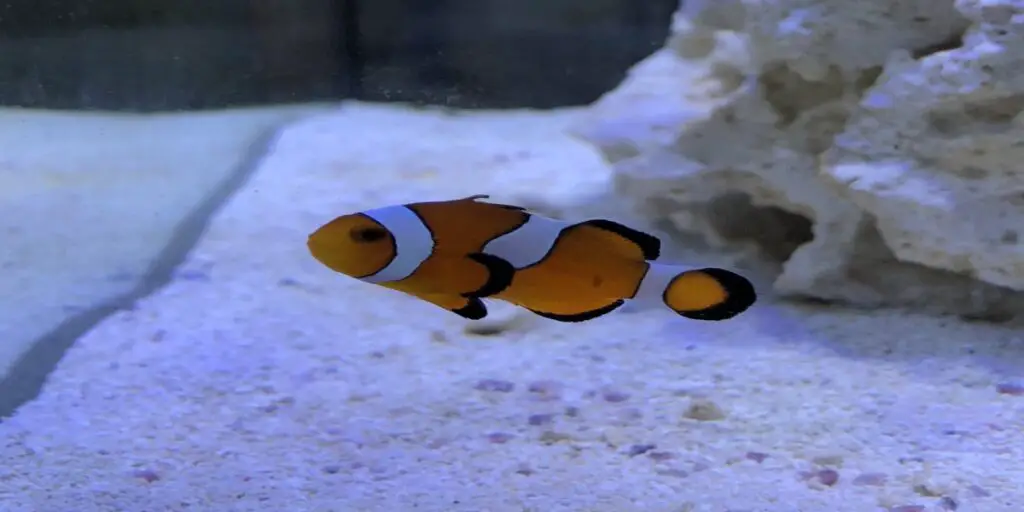Discover the fascinating world of clownfish black spots in our comprehensive article. Learn about their unique characteristics and habitat.

Clownfish black spots can be a cause for concern among saltwater aquarium enthusiasts, but with the right knowledge and care, you can help your clownfish recover from this condition or even prevent it from occurring in the first place. In this comprehensive guide, we’ve covered the symptoms, causes, treatment options, and prevention strategies for clownfish black spots. By understanding the underlying factors and taking appropriate actions, you can ensure the health and vibrancy of your clownfish.
Now, let’s delve deeper into each aspect of clownfish black spots.
Symptoms of Clownfish Black Spots
One of the first things any responsible clownfish owner should be aware of is how to recognize clownfish black spots. These spots manifest as small, dark patches on the clownfish’s skin, varying in size and distribution. While black spots are the primary indicator, affected fish may also exhibit other symptoms like lethargy, loss of appetite, and labored breathing. Monitoring your clownfish for these signs is crucial for early detection and intervention.
Causes of Clownfish Black Spots
Understanding the underlying causes of clownfish black spots is essential for effective treatment and prevention. Several factors can contribute to this condition:
1. Exposure to Coral Stings
Clownfish often form symbiotic relationships with specific types of anemones, which provide protection from predators. However, when they inadvertently come into contact with the stinging tentacles of other corals, it can lead to the development of black spots.
2. Parasites
Parasites, such as flukes and worms, can also be responsible for clownfish black spots. These parasites can infiltrate a clownfish’s skin, leading to the formation of unsightly spots.
3. Stress
Stress is a significant trigger for clownfish black spots. Factors like poor water quality, overcrowding in the tank, or aggression from other fish can stress out your clownfish, making them more susceptible to this condition.
Treatment for Clownfish Black Spots
The approach to treating clownfish black spots depends on identifying the root cause. To effectively address the issue:
Coral Sting Exposure
If coral stings are the culprit, it’s essential to remove the affected clownfish from the tank and place them in a quarantine tank. This will prevent further exposure to the stinging corals and allow the clownfish to heal.
Parasites
For cases involving parasites, it’s crucial to use a targeted medication to treat the specific type of parasite affecting your clownfish. Consult with a marine fish disease specialist or your local aquarium store for the appropriate treatment.
Stress
To address stress-related black spots, you’ll need to create a less stressful environment for your clownfish. This may involve improving water quality, providing ample hiding spots, and ensuring there’s no overcrowding in the tank.
Preventing Clownfish Black Spots
As the saying goes, prevention is better than cure. To minimize the risk of your clownfish developing black spots, follow these proactive steps:
Maintain Water Quality
Consistently monitoring and maintaining excellent water quality is critical for the overall health of your clownfish. Regular water changes, proper filtration, and testing for essential parameters like pH, ammonia, and nitrites are essential.
Avoid Overcrowding
Overcrowding in the tank can lead to increased stress among your fish. Ensure that your clownfish have enough space to swim freely without feeling cramped.
Provide Hiding Places
Creating a tank environment with ample hiding places, such as live rock formations or coral structures, can help reduce stress for your clownfish. These hiding spots offer security and comfort.
You May Also Like:
- Black Spot Disease Betta: Essential Tips For Fishkeepers
- How Many Shrimp In A 3 Gallon Tank
- What Silicone Is Best For Aquariums (Reviews & Guide)
Conclusion
In conclusion, clownfish black spots are a common condition that can affect these iconic saltwater aquarium fish. While they can be unsightly, they are generally not fatal when addressed promptly and correctly. By being vigilant about the health and well-being of your clownfish, you can identify black spots early and take the necessary steps to provide appropriate treatment.
Remember that maintaining a clean and stress-free environment is the best way to prevent clownfish black spots from occurring in the first place. By following the guidelines and tips provided in this article, you can enjoy the vibrant colors and playful behavior of your clownfish for years to come.